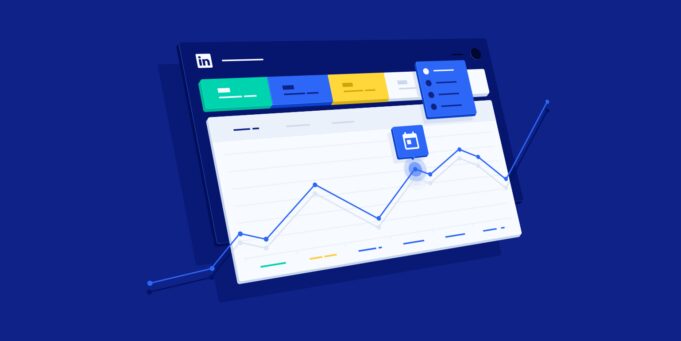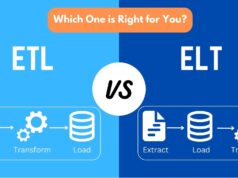If you’re looking to get the most out of your LinkedIn advertising campaigns, then Campaign Manager is the tool for you. This powerful platform allows marketers and business owners to create, manage and optimize campaigns on LinkedIn with ease. With Campaign Manager, you can target the right audiences, track performance in real-time and measure results quickly and efficiently.
Linkedin campaign manager helps businesses reach their marketing goals by providing intuitive campaign setup options that allow them to create effective campaigns with minimal effort. The platform offers a wide range of targeting options including job title, geography or industry type so businesses can tailor ads to their specific audiences. Additionally, Campaign Manager allows advertisers to set up automated rules for budgeting and optimization that ensure maximum efficiency for each campaign.
Campaigns created through this platform are tracked in real-time so marketers can react quickly when results don’t match expectations or objectives aren’t being met. Businesses also have access to a comprehensive analytics suite which provides insights into performance metrics such as cost per lead, click-through rate (CTR) or impressions delivered by each ad campaign. By using this data effectively, advertisers gain valuable insights into audience behaviour which help them adjust their strategies accordingly and achieve better outcomes from their campaigns as a result providing that you set up the LinkedIn Insight Tag.
Benefits of Utilizing a Campaign Manager on LinkedIn
As the world’s leading professional networking platform, LinkedIn is a powerful tool for engaging and connecting with potential customers. However, managing and growing your presence on LinkedIn can be a daunting task. This is where utilizing a campaign manager for your LinkedIn campaigns can be extremely beneficial.
Using a campaign manager to manage your campaigns on LinkedIn will give you an edge over other competitors as they are experts in their field. They understand how to use the platform’s features and tools, such as targeting specific audiences or setting up advanced campaigns with multiple variations of content. In addition, they know how to optimize ad budgets and track performance using analytics provided by the platform itself.
Campaign managers also have access to data that you may not have, like insights into which content resonates better with different audiences or what keywords should be used in order to boost engagement rates even further. This knowledge allows them to create more effective strategies that can help drive quality leads and conversions from your target audience quickly and efficiently.
Having someone who understands the ins-and-outs of social media marketing also provides invaluable advice when it comes to crafting effective posts and developing compelling stories across all platforms – including LinkedIn – that connects with users on an emotional level while driving action toward conversion goals.
Analyzing Your Target Audience

Analyzing your target audience is an essential step for any business or organization looking to increase their reach and maximize their effectiveness. Knowing who you are trying to reach and understanding their needs, values, and preferences will help you create content, messaging, and campaigns that resonate with them. By studying the demographics of your target audience, as well as their behaviors and motivations, you can create more successful marketing strategies. When analyzing your target audience there are several factors to consider:
- Demographics – What is the age range of your ideal customers? Are they male or female? What is their income level? Where do they live? These are all important questions to answer so that you can tailor content specifically for them.
- Behaviors – How does your target audience spend their time online? Are they active on social media platforms such as Facebook or Twitter? Do they use certain apps more than others? Understanding how people interact with technology will help you develop strategies that suit them best.
- Motivations – It’s important to understand why people would be interested in what you have to offer. What kind of problems do they need solving and how can you provide a solution for them? Knowing this information can help guide product development decisions as well as marketing.
Crafting an Effective Strategy
Crafting an Effective Strategy is essential to the success of any business. A well-crafted strategy will allow a company to identify their goals and objectives, develop plans for achieving those goals, and allocate resources efficiently. Crafting an effective strategy requires careful consideration of the current market conditions, the company’s strengths and weaknesses, and the available options for achieving success.
The first step in crafting an effective strategy is to conduct a thorough analysis of the current market conditions. This will involve researching competitors’ strategies, past successes or failures in similar markets, customer needs and wants, industry trends that are likely to affect your business in the near future, barriers to entry in your target market segments, etc. This information should be used as a basis for understanding how you can create value within your target market segments by identifying opportunities that match up with your capabilities better than those offered by competitors.
Once you have identified potential opportunities within your target markets it is important to develop specific objectives that are measurable so that progress can be tracked over time. These objectives should tie into overall corporate goals as well as reflect any changes made due to new information gathered about customers or competitors during the research phase of crafting an effective strategy. Additionally when developing objectives it is important to consider any legal or ethical.
Executing the Campaign and Tracking Its Performance

Executing the Campaign and Tracking Its Performance is essential for any successful marketing effort. An effective campaign requires planning, implementation, and tracking to ensure it meets its goals and objectives. Understanding the importance of each step involved in executing a campaign can help marketers to maximize their return on investment (ROI).
When creating a campaign plan, marketers should start by clearly articulating their goals and objectives. This will help them measure success and make adjustments if necessary. Once the goals are established, marketers must decide which channels they want to use for their campaigns—traditional or digital media such as email, social media, search engine optimization (SEO), or other platforms.
Once these decisions have been made, it’s important to create high-quality content that resonates with the target audience. Content should be creative yet succinct enough so that viewers don’t lose interest in its message quickly. Additionally, all content should include clear calls-to-action (CTAs) prompting viewers to take action after viewing the material.
After crafting an effective message through quality content across multiple channels, it’s time to implement the campaign plan by launching it through various outlets such as broadcast television or radio advertisements as well as online platforms like websites or social media networks.
Leveraging Analytics to Optimize for Success
The modern business landscape is increasingly saturated and competitive, making it difficult for businesses to stand out. To maximize success in this challenging environment, businesses must be able to analyze data effectively and leverage analytics to optimize performance. With the right approach, companies can use analytics to understand customer behavior and gain insights into their own operations. This can help them make better decisions, develop more effective strategies and ultimately increase profitability.
At its core, leveraging analytics involves collecting data from various sources such as customer surveys, sales reports or website traffic statistics. The goal is then to analyze this information in order to identify patterns that may offer valuable insights into customer behavior or organizational performance. For instance, a company could track website visits over time and then determine which pages are most popular with visitors or which keywords attract the highest number of clicks. By understanding these trends, the business can adjust its marketing campaigns accordingly in order to drive more customers towards its products or services.
Analytics also allows businesses to monitor their internal operations more closely by tracking metrics such as employee productivity or inventory levels over time. This enables them to identify areas where improvements need be made in order for their processes become more efficient and profitable in the long run. Additionally, companies can use analytics tools like predictive modeling algorithms.
Conclusion: Maximizing the Impact of Your Campaigns
Overall, a campaign manager on LinkedIn can be a great asset to any political team. They can help build relationships with key stakeholders and supporters, provide insight into the current political climate, and create strategic plans to target specific voting blocs.
Campaign managers are experienced professionals who understand how to effectively utilize digital platforms such as LinkedIn in order to reach and influence potential voters. With their knowledge of social media trends, analytics tools, and targeted messaging strategies, these professionals are essential for running successful campaigns in today’s digital age.

















